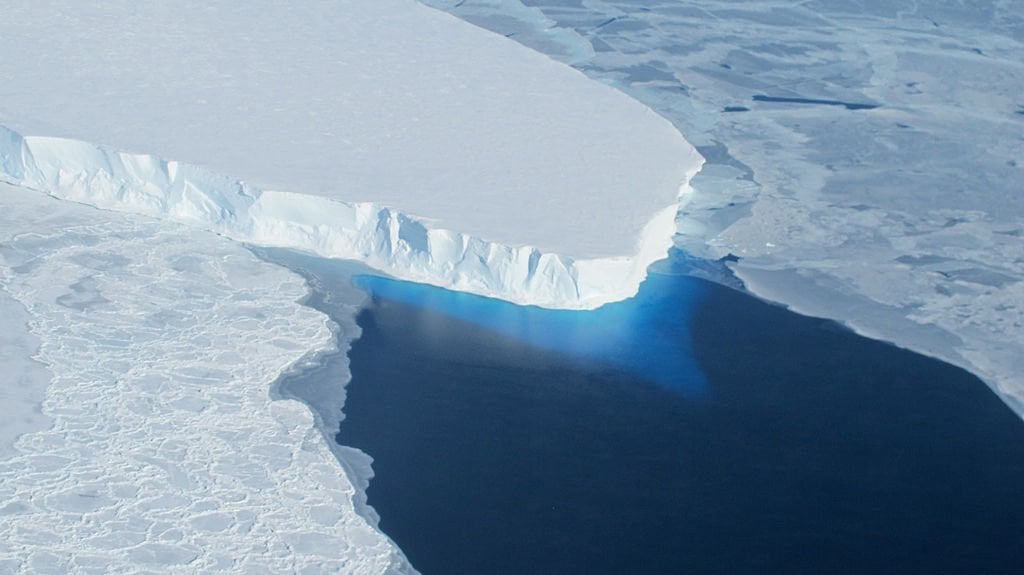Antarctica is already sustaining major ice loss due to warming ocean temperatures and climate change. Now NASA has discovered a giant cavity under Thwaites Glacier in West Antarctica. It’s about 1,000 feet tall and two-thirds the area of Manhattan. According to NASA’s Jet Propulsion Laboratory, the cavity is large enough to have contained about 14 billion tons of ice, but most of it has melted within the last three years.
Scientists will have to act fast to understand what impact the giant cavity under Thwaites Glacier could have on the ocean and its temperature, and the cavity is likely still growing. The glacier itself contains enough ice to raise the ocean level by approximately two feet if it were to melt entirely.
NASA conducted a campaign to monitor the polar regions in 2010. Using radar, the researchers found that the cavity was about 1,000 feet tall. Scientists previously thought the glacier wasn’t tightly connected to the cavity below, and now they believe the glacier’s ice melted over the course of three years. They published their findings in the journal Science Advances.
“[The size of] a cavity under a glacier plays an important role in melting,” lead author Pietro Milillo of NASA’s JPL said in a statement. “As more heat and water get under the glacier, it melts faster. We are discovering different mechanisms of retreat.”
Researchers also had to calculate the rate at which ice is lost, and they discovered a very difficult pattern. Some sectors of ice were retreating much faster than others. That led to the discovery of a “grounding line,” which is the point where the ice is lifted off the bedrock and slowly moves. That “grounding line” is now found to be shifting. The giant cavity under Thwaites Glacier is located on its western side, which is where the melting rate was found to be the fastest.
“On the eastern side of the glacier, the grounding-line retreat proceeds through small channels, maybe a kilometer wide, like fingers reaching beneath the glacier to melt it from below,” Milillo said, adding that scientists are preparing for a new expedition.
The International Thwaites Glacier Collaboration is a collaboration project between the U.S. National Science Foundation and the British National Environmental Research Council. The two organizations want to understand what’s happening to the glacier and monitor its response to climate change in the future.
“Such data is essential for field parties to focus on areas where the action is, because the grounding line is retreating rapidly with complex spatial patterns,” he said.
The study also found that the in-ocean interactions are more difficult to understand than was previously thought. Scientists also found that the glacier has been coming off of its ridge at a rate of 0.4 to 0.5 miles a year since 1992, and even though its rate of retreat is relatively stable, the melt rate is still too high not to cause concern.





